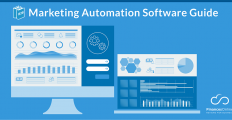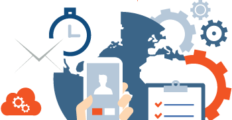
Source: Pixabay
With tech giants releasing new products under their lines of wearables devices, it’s hard to believe that the market is facing tough challenges.
According to the Q2 data of IDC’s Worldwide Quarterly Wearable Device Tracker, the global shipment of wearable devices declined 6.9% year over year to 107.4 million units. The report cited rising inflation, fears of a global recession, and increased spending on other non-tech categories as major factors that slowed down market growth. Additionally, the market is experiencing a downturn as an aftereffect of its hyper-growth in the last two years.
Ramon Llamas, research director for Mobile Devices and AR/VR at IDC said that the wearables market will most likely remain flat this year. The IDC now projects that shipments will be stagnant at 535.5 million units. But vendors can expect growth to return in 2023, especially with smartwatches and hearables poised to attract new buyers.
“As the wearables market takes slow steps towards maturity, it will eventually reckon the ebbs and flows between the record-breaking volumes we saw during the pandemic and what we see today. But overall, the trend continues upwards, just at a slower pace as consumers seek replacements and the number of new users starts to decline,” Llamas explained.
B2B Opportunities for Wearables
The wearables market has long been thought of as targeting individual consumers. Devices such as smartwatches, wireless earbuds, and fitness trackers clicked in the retail sector but have yet to become mainstream in business applications.
With that said, wearable devices are steadily making their way into the workplace. Businesses across industries are slowly opening up to the potential benefits they can experience from wearable technology. These include the healthcare industry, manufacturing, design, and training/education.
For example, hospitals and clinics are using wearables as part of their patient engagement solutions. These wearable devices track the vitals of patients such as body temperature, pulse rate, and respiration rate. Patients can share their health data generated through wearable devices and health monitoring apps with their physicians or healthcare provider.
Businesses in the retail and ecommerce sector can also benefit from advancements in VR/AR headsets. As these wearables become mainstream in the future, marketers can capitalize on VR/AR by crafting digital/interactive experiences for their customers. This could level up their digital marketing and result in increased brand awareness and revenues.
Another sector that is underexplored when it comes to capitalizing on wearable technology is the safety equipment business. Most consumers know smartwatches and fitness monitors from tech giants like Apple, Google, and Samsung. But wearables also include devices such as ring scanners and biosensing clothing.
Not Just Smartwatches
Ring scanners can take data collection to the next level. Since they are small and sturdy, they can be worn on the hand or mounted in tough environments. From warehouses to manufacturing production floors and assembly lines, ring scanners can have multiple applications in the workplace.
Biosensing clothing, on the other hand, can have useful applications in businesses often engaged in fieldwork. These smart clothing have fabric materials turned into biosensors that can measure a muscle’s electrical activity when worn. They can be used to monitor an employee’s physical condition while working remotely at a challenging location. Firefighters, for instance, can use biosensing clothing to keep track of their vitals even in the middle of a rescue.
Moreover, biosensing clothing can work well in medical applications. Physical rehabilitation centers can use biosensing clothing to collect a patient’s long-term muscle electrical signals with more precision. Clinicians can then use the data to assess the patient’s rehab progress or make adjustments to their treatment.






















Leave a comment!